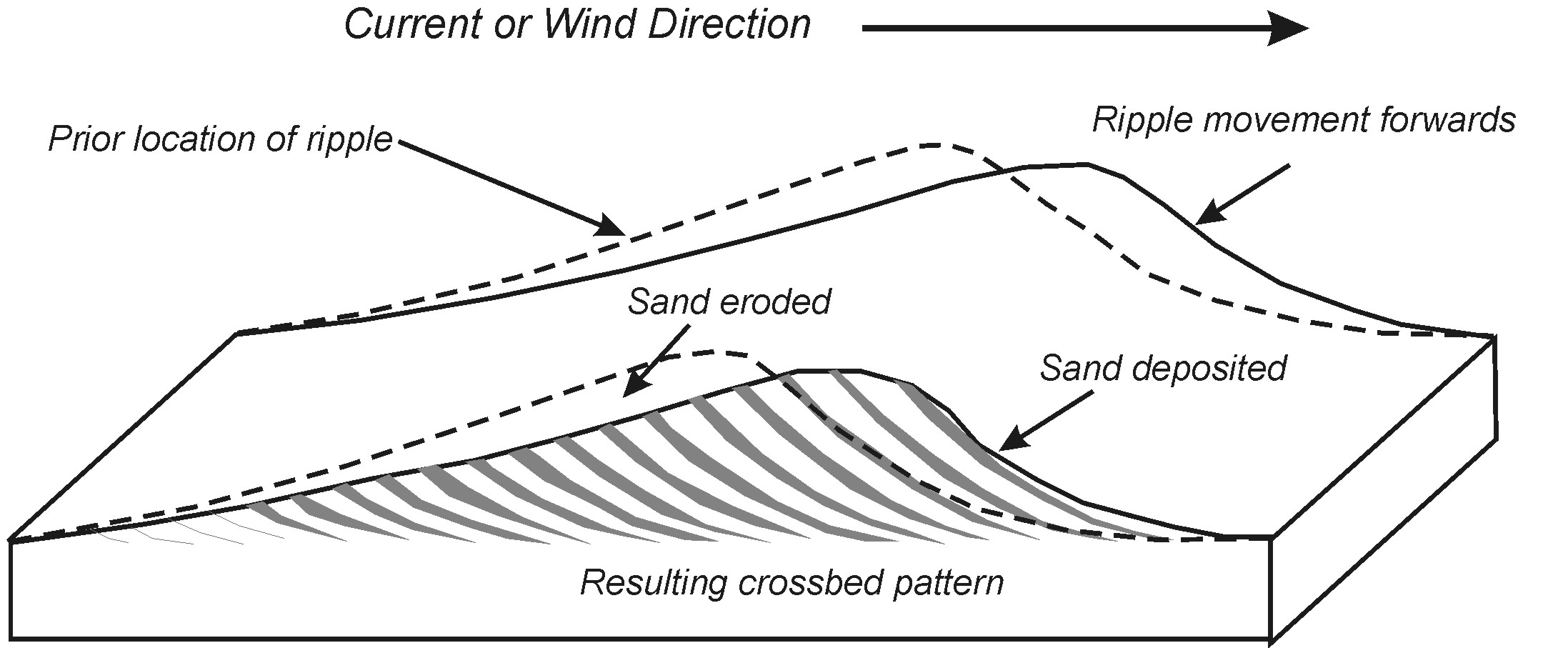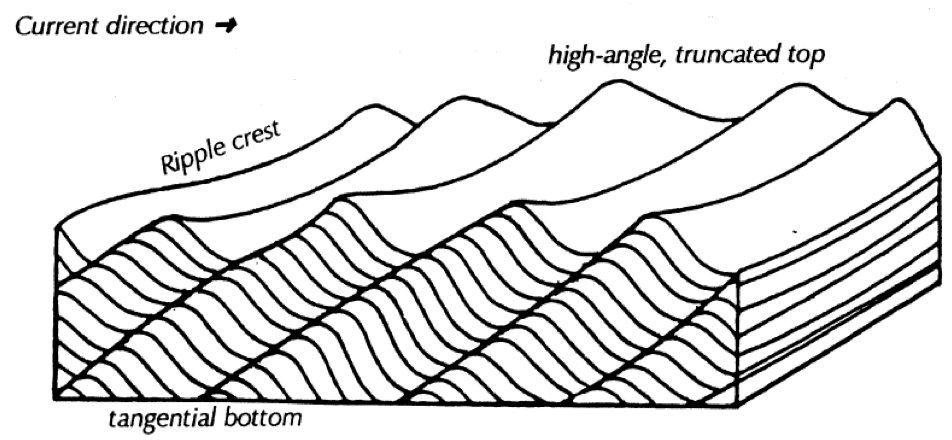Exercise 1.3. Sedimentary Structures
Sedimentary rocks can have physical structures that give clues as to how or where the original sediments were deposited. The most common and important sedimentary structures form at the time of deposition and are referred to as primary sedimentary structures. Learning to identify sedimentary structures and to understand how they formed gives geoscientists a crucial tool for understanding past environments.
What To Do
Read through the descriptions of all structures below, then advance through the slide decks in the Samples section to see specimens that demonstrate one or more of these features. Identify the sedimentary structures in each sample. Your worksheet has blanks where you can record the sample numbers in which each structure appears. You may need to list a sample number in more than one blank.
For ease of reference, the structure types visible are summarized in the linked list below:
List of Structure Types
Descriptions of Sedimentary Structures
Bedding
Sediments and sedimentary rocks can be separated into different beds of varying thickness. A bed is a layer of sediment that is distinct from sediments above and below because of differences in grain size, mineralogy, cementing agents, fossils, sedimentary structures, and other properties. There are several types of beds:
Parallel Bedding
Beds are parallel to one another. Which samples display parallel bedding?
Laminated (or Laminar) Bedding
A type of parallel bedding, where the beds are very thin (mm scale). Which samples display laminar bedding?
Cross-bedding
Beds are over 1 cm thick, and inclined at an angle to the original surface of deposition. (Cross-laminations are similar structures with thicknesses < 1cm.)
Under flowing water or air (wind) the sediment surface will form ripples ranging from cm high up to dunes that are m high (Figures 1.5, 1.6).


The flowing water or air speeds up when it climbs the upstream side and may pick up or erode some of the sediment there. When it passes over the crest, the water or air slows down and sediment will settle out of suspension on the downstream side of the ripple, adding layers to that side. Over time, the whole ripple or dune moves downstream as sediment is added to the downstream face. For sediments deposited in water, larger cross-beds indicate faster moving water or larger water waves. Which samples display cross-bedding bedding?
Asymmetrical Cross-beds
These cross-beds or cross-laminations form in a stream where flow is uni-directional (i.e., the water flows only in one direction). Material is removed from the upstream side and deposited on the downstream side (Figure 1.7a), and the resulting ripple has a steeper slope on the downstream side. Which samples display asymmetrical cross-beds?
Symmetrical Cross-beds
Sediments on or near beaches in lakes and at the ocean encounter wave action which reworks the sediment back and forth as the waves come on shore and off. Cross-beds or cross-laminations form as sediment is added into this wave action. Some will be preserved going onshore, and some offshore (Figure 1.7b). The result is symmetrical cross-beds that form a herringbone pattern. These features indicate near-shore conditions in a lake or ocean. Which samples display symmetrical cross-beds?

Graded Bedding
Grain size may change through a bed and the trend is described from the bottom to the top (oldest to youngest). Normally grain size decreases upwards, indicating that a higher energy environment gradually slowed down and allowed finer sediments to settle out on top of coarser sediments. This might be typical of sediments deposited from a river where flow decreased over time, or at the beach following a big rainfall or storm event. This is referred to as a fining upward sequence (FUS). Coarsening upward sequences (CUS) are less commonly preserved in a bed. If energy was rising in a river or beach, then chances are, the higher energy later in time will erode and re-deposit any finer sediment. Which samples display graded bedding?
Mud Cracks
Mud cracks are formed by the drying and shrinking of mud exposed to air. Drying creates either polygonal shaped desiccation cracks or mud curls. They are common in desert (playa) lakes, tidal flats and the flood plains of rivers, where fine sediments are deposited at the edges of water bodies that then dry out or where water levels drop. Which samples display mud cracks?
Samples
Advance through each of the following slide decks to see one or more photographs of each sample. Some slides also include a short video of the sample being rotated. Videos do not have sound. If you can’t see the slide decks, click on each sample name to open the slide deck in a new window.
